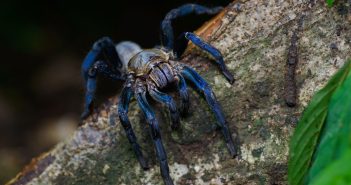by Derek Rogers
Newts are a type of amphibian that look a lot like salamanders. However, unlike salamanders, newts spend most or all of their life in the water. They are descended from salamanders, but branched off around sixty million years ago. Now, they’re found in many temperate parts of the world, including Asia, Northern Africa, Europe, and North America.
Some types have a terrestrial form (referred to as an eft), that lives on land to find a new home, then come back to the water when mature. Newts are popular among pond owners. They’re charming, cute little creatures in their own right. However, having a population of newts also means that your pond is very healthy, since these creatures have somewhat specific living requirements. If you’re thinking about colonizing your pond with newts, or setting it up to attract these little creatures, here’s some information that might help.
Newts are often food for other creatures. This means that having newts might draw some impressive looking birds to your pond, but it also means you’ll have to pay attention to what’s living in and around it if you want to keep your newt population alive. Carnivorous fish often pick off these little lizard-like creatures, making it hard to keep the population up. As well, if there are any ducks frequenting your pond, they may eat the vegetation your newts are laying their eggs in, giving them no place to breed. This doesn’t mean you have to chase off all predatory birds or remove newt-eating fish from your pond. It does mean that it’s a good idea to try to provide habitat and other conditions that encourage a thriving population that won’t be damaged by predation.
Another danger that can kill stocked or native newts is the pump of a small pond. If you have a smaller pond which requires a pump for circulation, newts can be sucked into the pump and killed. Even if you use wire mesh, these pumps can kill very small newts. You can solve this problem by using an ultra fine mesh, or by placing your pump underneath a weighted upside down pot with a hole cut in it. Remember to use mesh over this hole as well. These methods will cut down on the number of newts you lose, and on unpleasant filter cleaning.
Newts can live in fairly shallow ponds, and prefer slopes with lots of plants. High density weeds will encourage them. A good environment for newts will help you develop a breeding population that will stand up to even predatory fish and birds. While tadpoles and young newts may fall prey, a pond that can support them will encourage their numbers to increase. Expect to see baby newts around April and May, if your animals are breeding. You can either make your pond suitable for the local species of newt that you’d like to attract (specific conditions vary by species) or purchase newts and stock your pond. The second is more expensive, but also gives you a better chance of seeing these animals live and grow in your waters.

Derek Rogers is a freelance writer who represents a number of UK businesses. For pond maintenance, he recommends Seapets, one of the UK’s of pond supplier specialists.




6 Comments
Newts sounds like something we would like to have, too.!
I never even thought of newts in a pond! Frogs, toads, fish, plants, birds… but not newts.. that sounds like fun. 🙂
thank you..I am pigeon site
They sound fun!! Are they much like lizards? I want to get some but where would I even get them at? My son likes having these funny things!! Thanks!
-Joanne
Joanne – I just try to make our pond newt-friendly, and occasionally the kids and I go down to the pond on an expedition to see what we can find (which usually results in bull frogs and tadpoles along with a lot of animal prints). I’ve never thought about actually purchasing anything for my pond, so I went to see what I could find online.
I found some helpful information over at Robyn’s Salamander and Newt Page on FishPondInfo.com. Here’s what I learned:
There’s a ton of other information on that website (FishPondInfo.com) so if you’re looking to learn more that’s a great start. There’s also a Newt and Salamander portal called Cuadata.org that’s pretty neat, too.
For total fun, we watched a couple of videos I found on YouTube so that my we’ll be better able to spot any newt activity or eggs at our own pond. Here’s what we just watched:
Newt Eggs in a Bottle
Newts
dose anyone want to sell me some newts? i would love to have some in my pond!